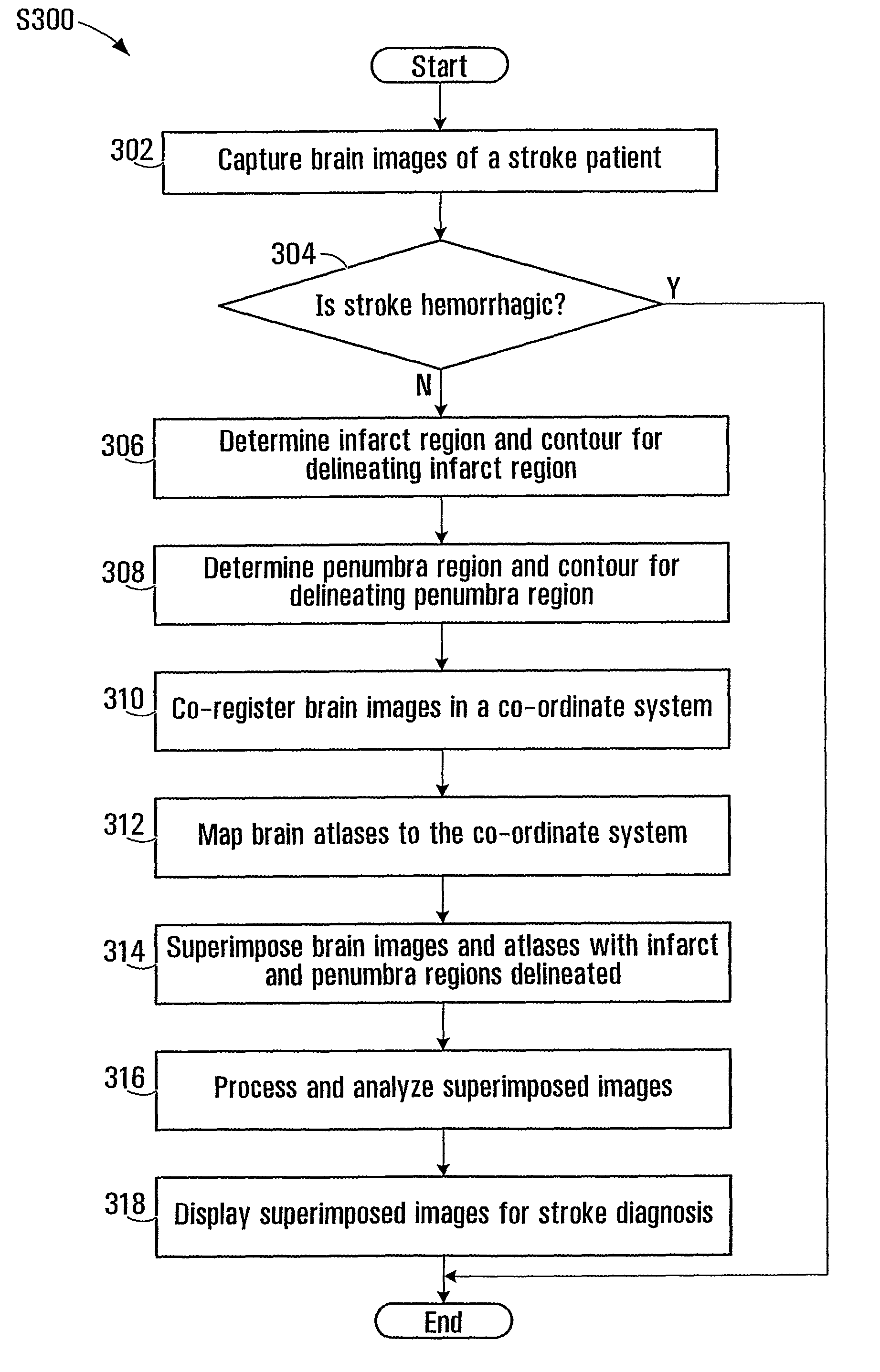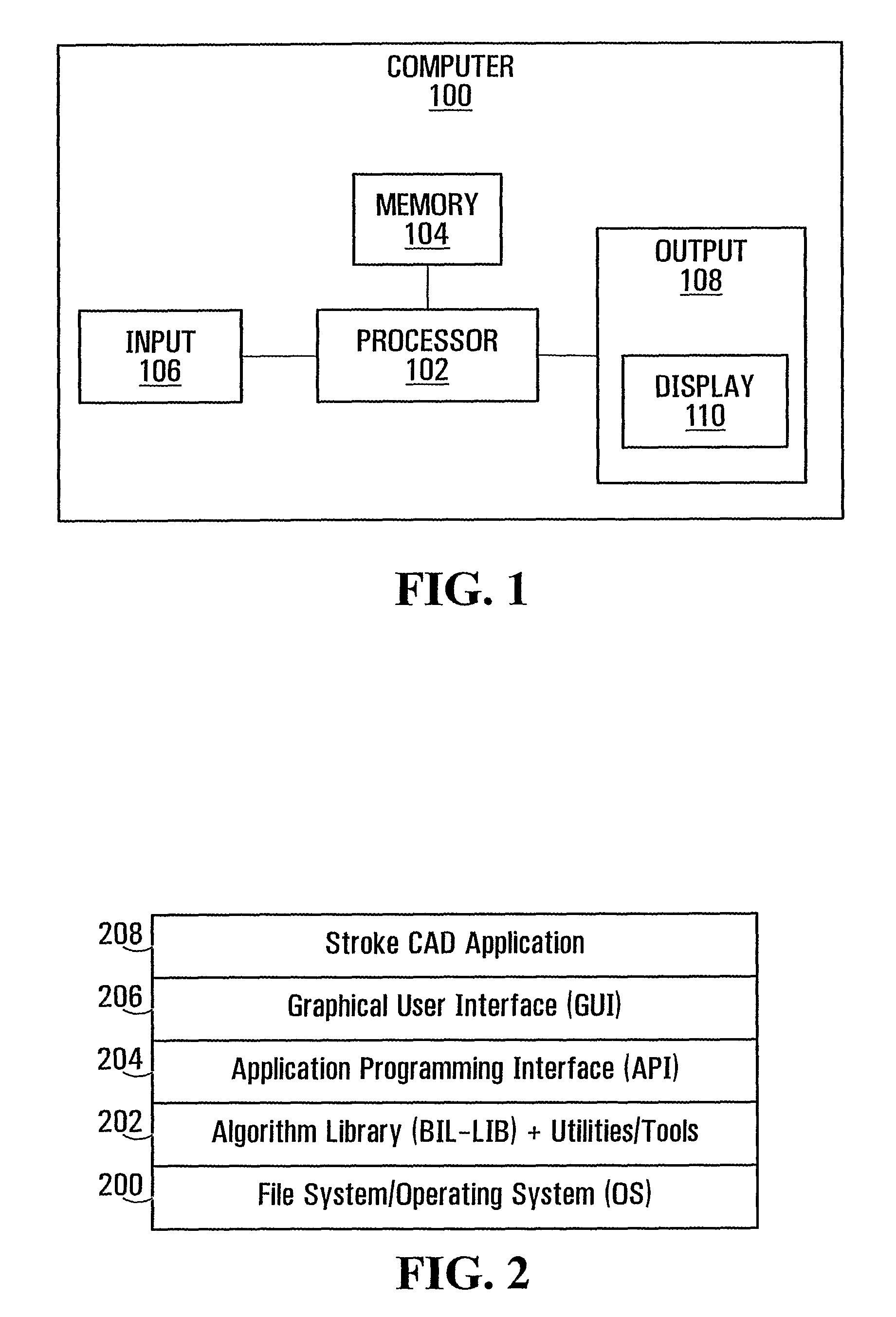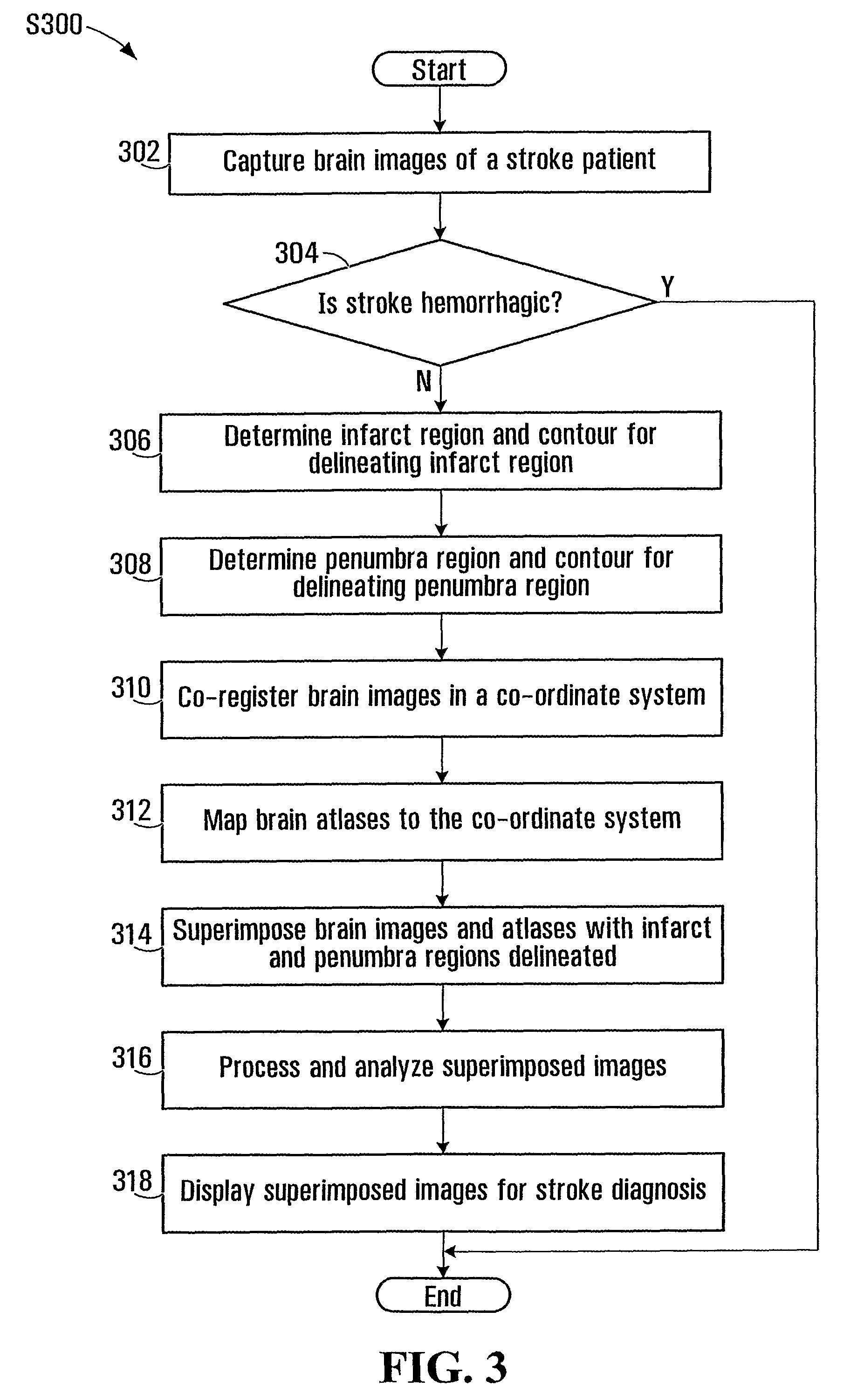Superimposing brain atlas images and brain images with delineation of infarct and penumbra for stroke diagnosis
a brain atlas and brain image technology, applied in image enhancement, angiography, instruments, etc., can solve the problems of inconvenient stroke diagnosis and treatment planning, inability and death, inconsistent and inaccurate, etc., and achieve the effect of convenient stroke analysis and convenient identification and visualization
- Summary
- Abstract
- Description
- Claims
- Application Information
AI Technical Summary
Benefits of technology
Problems solved by technology
Method used
Image
Examples
Embodiment Construction
[0028]As used herein, an “image” may include a brain image, a map image, an atlas image, or a superposition of these images. The term “image” may refer to a displayed image or stored image data for displaying the image. The image data may be stored in digital form on a computer readable medium, such as in an electronic image file. An image may be two-dimensional (2D) or three-dimensional (3D). In some applications, 3D images may provide better views and additional information may be obtained from 3D images. In some applications, 2D images may be easier to process and display, and thus can be processed quicker with less consumption of computing power.
[0029]A “brain image” refers to an image of a brain that is captured using an imaging device. A brain image may be a CT image, an MR image or another scanned image, or the like.
[0030]Each of the terms “map” and “atlas” is used herein in a broad sense, but generally refers to a map image or an atlas image, respectively. A brain map may re...
PUM
 Login to View More
Login to View More Abstract
Description
Claims
Application Information
 Login to View More
Login to View More - R&D
- Intellectual Property
- Life Sciences
- Materials
- Tech Scout
- Unparalleled Data Quality
- Higher Quality Content
- 60% Fewer Hallucinations
Browse by: Latest US Patents, China's latest patents, Technical Efficacy Thesaurus, Application Domain, Technology Topic, Popular Technical Reports.
© 2025 PatSnap. All rights reserved.Legal|Privacy policy|Modern Slavery Act Transparency Statement|Sitemap|About US| Contact US: help@patsnap.com



